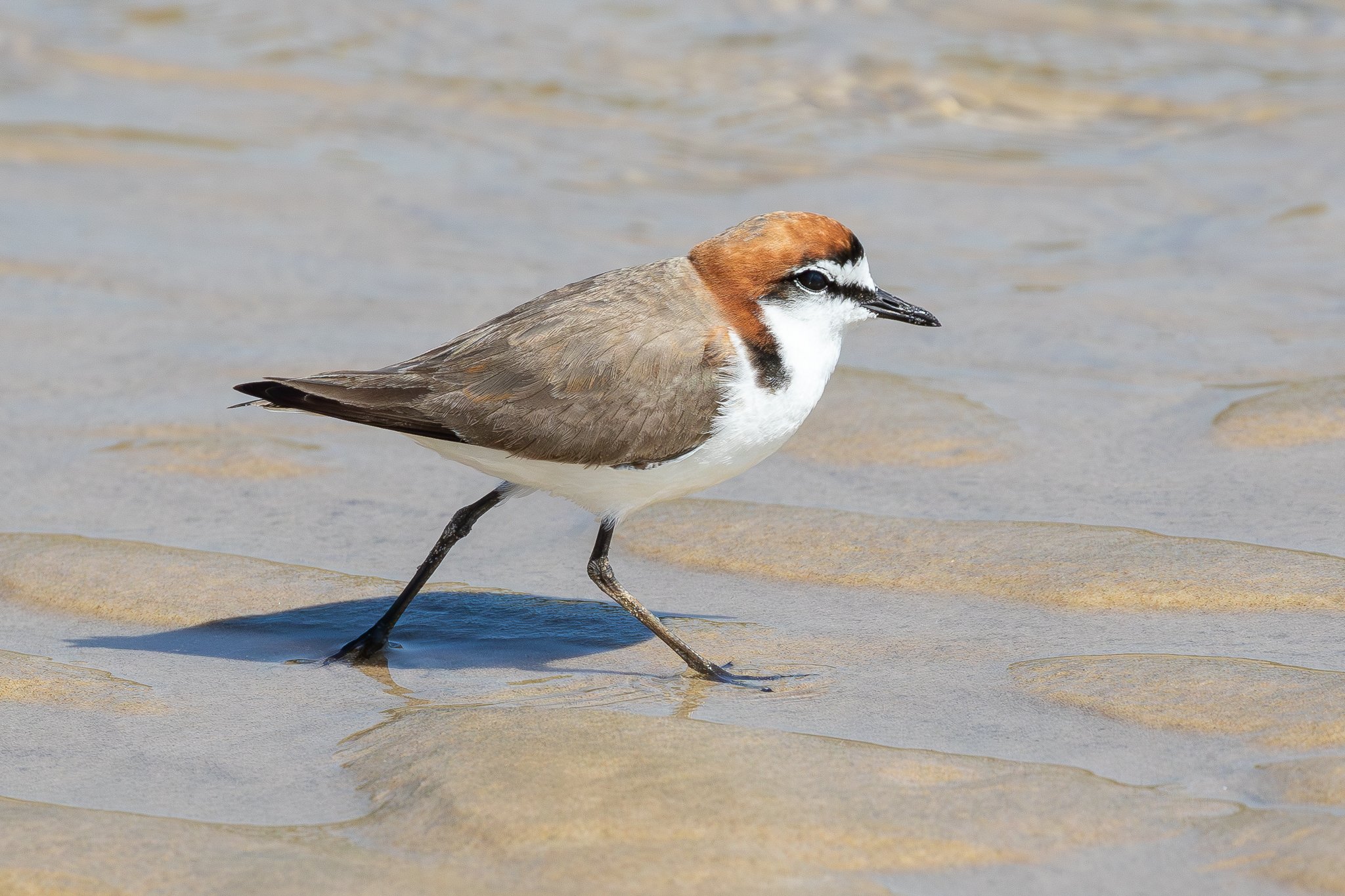A flock of fifteen to twenty birds caught our attention at this week’s survey at Tyagarah, in the Northern Rivers Region of New South Wales. They were diving and weaving with flocks of Figbirds and hard to identify. After considerable discussion, barring seen in some of the photos indicated the birds were Barred Cuckoo-shrikes, unusual to see near the coast.
An immature Barred Cuckoo-shrike at Tyagarah, in Northern New South Wales. All but two of the other birds in the photos taken of the cuckoo-shrikes showed immature birds like this one, with several photos showing seven or eight cuckoo-shrikes in the same shot.
Bird in flight. These unfamiliar birds caused a lot of head scratching with their rapid movement through a stand of large eucalyptus trees.
The bird on the right looked different to the other, it could possibly be a Barred Cuckoo-shrike in juvenile plumage? The CSIRO Australian Bird Guide says that juvenile plumage is only worn briefly and not much is known about it.
This was the only adult seen in all the photos and unfortunately this was the best photo I had of it.












































































































